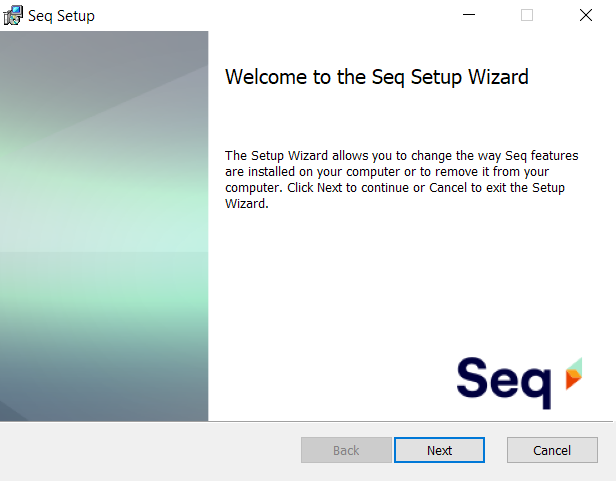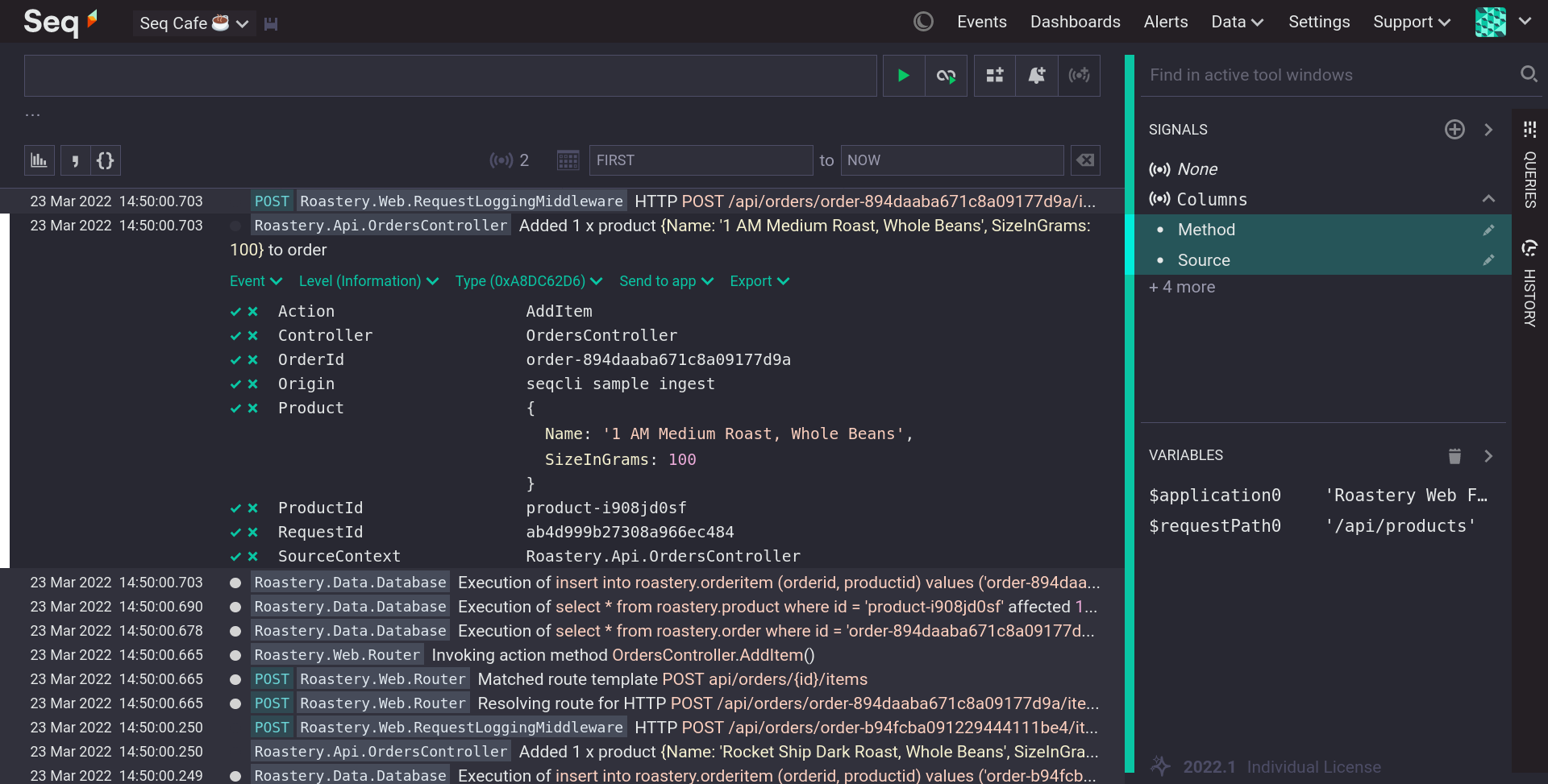Getting Started on Windows
Download Seq .msi from datalust.co/download to install it on your local machine, or a Windows server. This pages explains installation steps, how to configure your application to send logs to Seq, enabling authentication, and next steps.
Seq is a telemetry server that runs on a central machine. Your application uses a library like Serilog, Microsoft.Extensions.Logging or OpenTelemetry to send structured events to Seq's HTTP API, which stores them and makes them searchable through Seq's web interface.
1. Download the Seq installer
Download the latest Seq .msi from the Seq website.
2. Install Seq
Launching the installer will start the Setup Wizard:

Step through each page of the wizard. Once the installer has finished copying files, choose to start the Seq service.
Unless you've installed Seq previously, this will open the Seq Service Administration dialog and you'll be prompted for a location to store Seq's data files, and a URL to host the user interface and HTTP API. Choose the defaults if you're unsure.
It's important to set an administrator username and password for Seq when prompted.
After the service is configured, browse the Seq UI at http://localhost:5341.

The Seq web UI, showing a search bar and a list of most recent events in descending order.
Before you go live...
If you're hosting Seq on a shared server for your team, check out the System Requirements and Production Deployment Checklist.
3. Ingest events
Before you can benefit from Seq, your applications need to be configured to send events through one of the supported logging libraries.
- Using Serilog - Serilog is a modern logging library for the .NET platform with deep support for structured event data. With the addition of SerilogTracing it can also produce traces.
- Using ASP.NET Core - the Microsoft.Extensions.Logging library included in ASP.NET Core works well with Seq.
- Using OpenTelemetry - OpenTelemetry provides logging and tracing client libraries for all major programming languages.
- Using Node.js - on Node.js, we support the Pino, Winston, and Bunyan logging libraries.
Seq integrates with a range of languages, libraries and frameworks, and has a simple HTTP API for receiving telemetry data. Learn more about getting logs into Seq.
If you're unsure where to start, we recommend Serilog.
What's next?
Once your apps are happily sending events to Seq, you can:
- Search your events more effectively by getting to know the Seq query syntax
- Save your search filters by creating signals to make searches indexed
- Manage your disk usage with retention policies
Happy logging!
Updated 5 months ago
